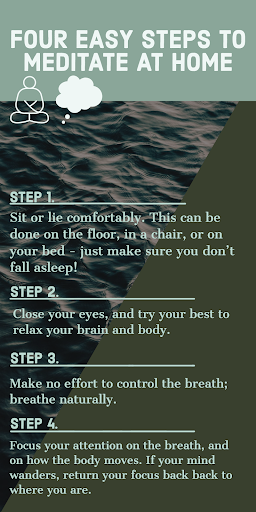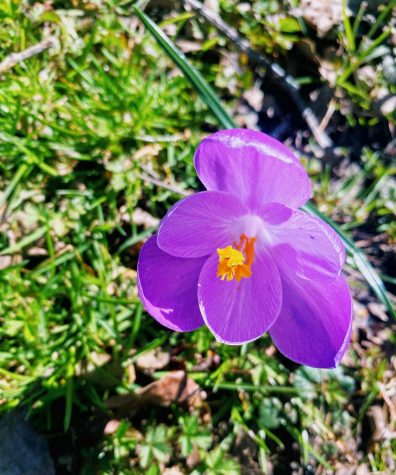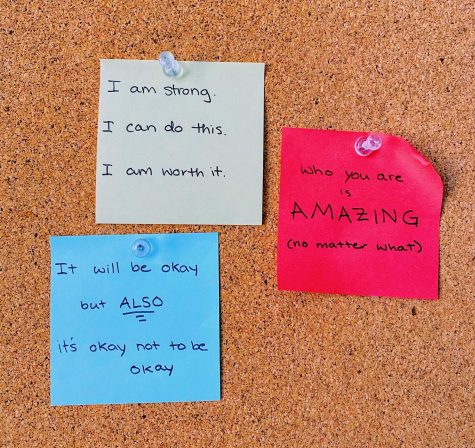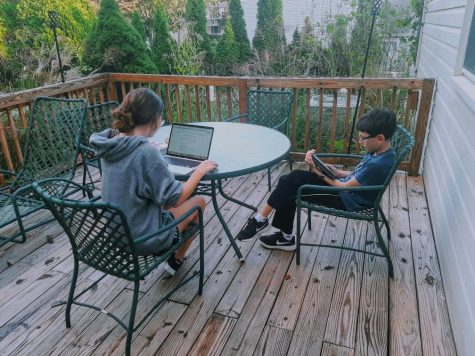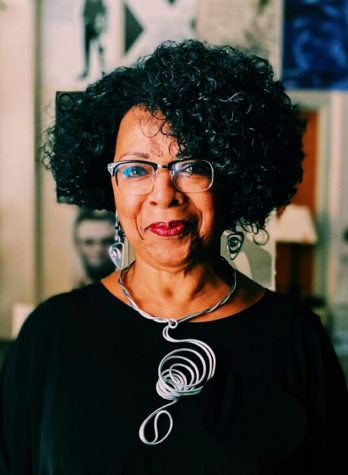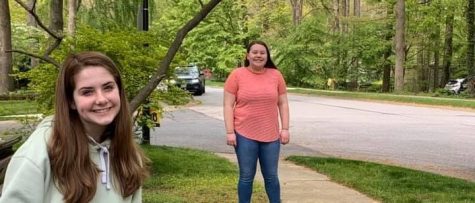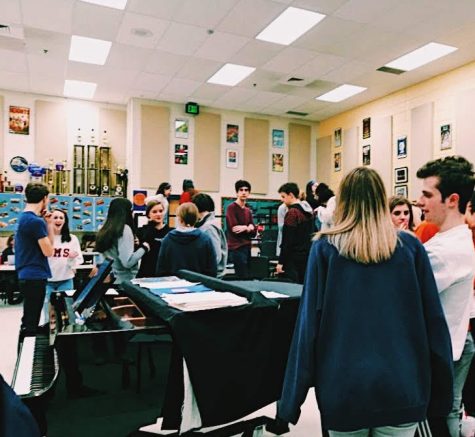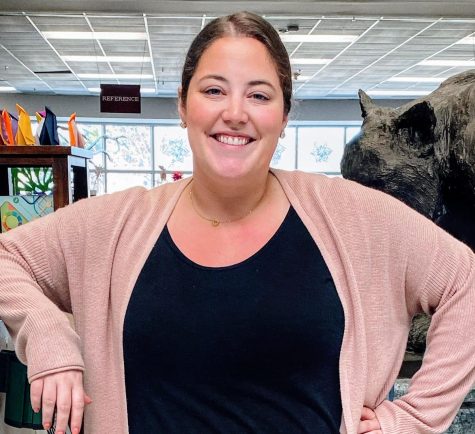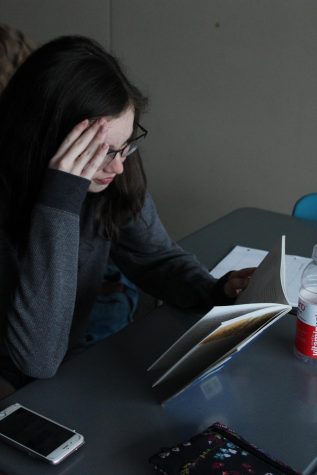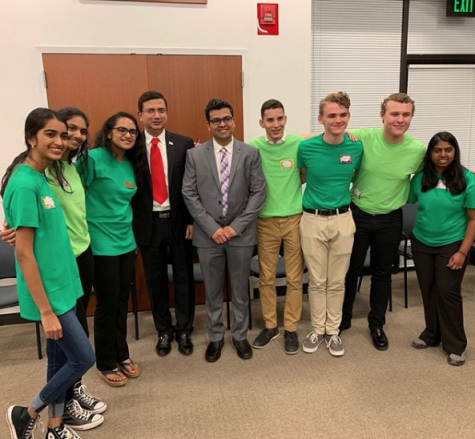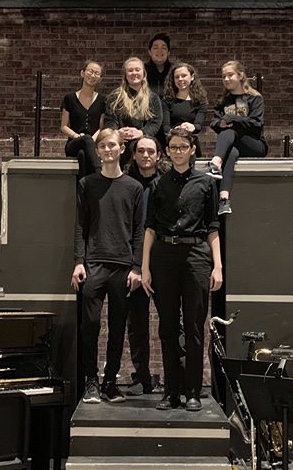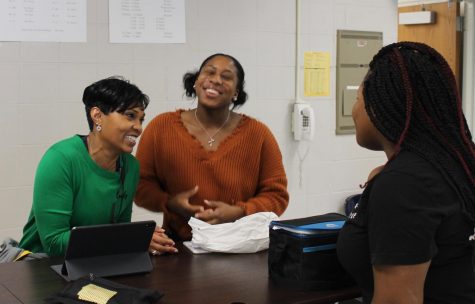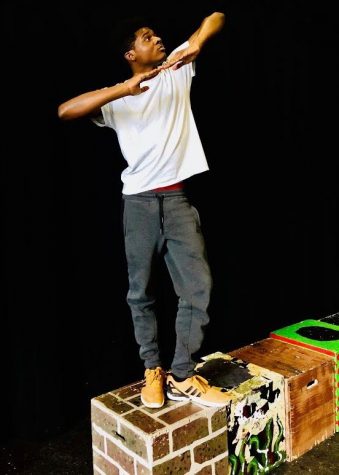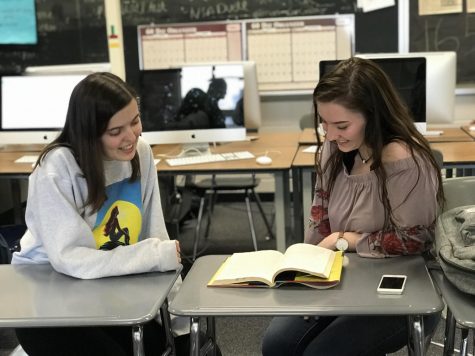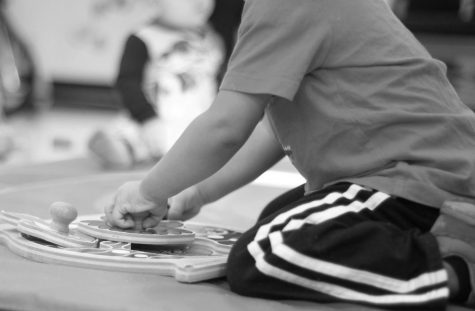Meditation and mindfulness: Working towards a healthier classroom
Your feet are firmly planted on the floor, pushing down. Your spine is straight against the back of the chair, posture perfect. Your eyes are closed, and you feel enveloped by the darkness, as if it were a blanket wrapped around you from head to toe. The room is silent except for the voice emitting from the speakers, asking you gently to relax, and patiently let your mind wander. This is meditation, and it’s practiced by all kinds of people all over the world. However, it’s also used by Wilde Lake High School chemistry teacher, Ms. Ridlon, who takes the time to meditate and practice mindfulness exercises with her students, giving them time to relax that they may not be able to attain anywhere else.
Having moved to Maryland from Connecticut, Ms. Ridlon also brought along some other teaching practices, such as giving students varying performance tasks in place of multiple choice tests. “I found that when you give kids a choice, they second guess their answer, and it’s more confusing than it needs to be,” she says.
“I think it’s awesome, because she does different types of it – from creative assessments to voice memos. For me personally, wanting to be a teacher, it’s what I think is the better option in comparison to normal testing,” says junior Bridget Tiffey. “It plays to each student’s strengths, which is amazing.”
While in Connecticut, Ms. Ridlon worked at an inner city school, and she found that the stress levels were very high, so she searched for different ways to try and help her students as much as she could. “The hallways were a big trigger for a lot of kids because of the noise, fights, or drama,” she says, “…so I looked into some things, and when I stumbled upon meditation, I thought it’d be a good idea.”
She had already used it personally for the past six or seven years, but never in a group setting. “I reached out to another person I worked with who I knew was big into meditation and she helped me integrate it into the classroom,” she says.
Ms. Ridlon also went to trainings from the Holistic Life Foundation when they were in Connecticut, where she learned different types of breathing techniques, and brought those to her classroom.
“High school is a super anxious place to be, no matter what class level you’re in or what kind of stress it is,” she says. “Stress is stress, and it will affect you either way. Just sitting down and taking a second, not feeling rushed, and giving yourself that minute to breathe, I find is very helpful.”
Junior Sydney Cox says, “People find it sort of weird at first I think – it’s a rather unorthodox thing to do in school as far as what students are used to in the past.” However, she personally really likes it because she has little to no time to destress at home or by herself because of how busy she is. “So, integrating that into our school day and our classes are extremely beneficial, and it gives me time to decompress before one of my more stressful classes of the day,” she says.
Currently a coach of Wilde Lake track and JV football, Ms. Ridlon also coached at her previous school in Connecticut, and incorporated yoga into her football and track teams, since yoga is considered a form of mindfulness. Though she hasn’t started it yet at Wilde Lake, she’s been thinking about it for the future.
You open your eyes, and breathe in the cool air. Feeling refreshed, the bell rings, and you move to your next room. In the classroom, especially in high school, meditation and mindfulness exercises can greatly aid students in reducing stress, and Ms. Ridlon is one teacher beginning to take these steps towards a healthier school environment.
Your donation will support the student journalists of Wilde Lake High School. Your contribution will allow us to purchase equipment and cover our annual website hosting costs.



